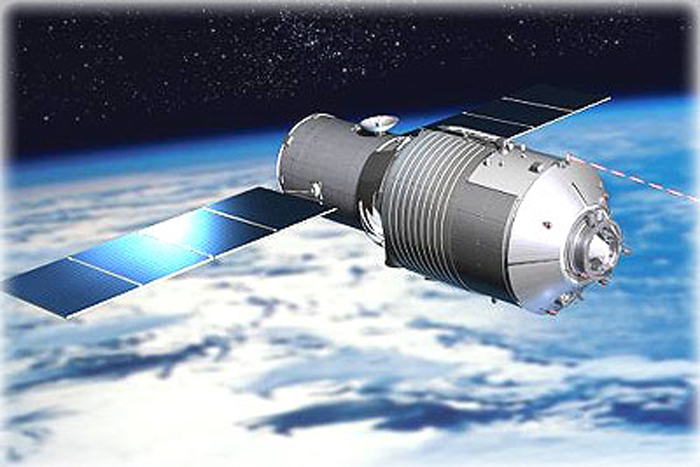Tiangong-1 Space Lab Will Fall to Earth Next Year, China Says

China's first-ever space lab will die a fiery death in Earth's atmosphere toward the end of next year, Chinese officials said.
The 9.4-ton (8.5 metric tons) Tiangong-1 spacecraft is currently intact and orbiting Earth at an altitude of 230 miles (370 kilometers), according to Wu Ping, deputy director of China's Manned Space Engineering office. That's a bit lower than the International Space Station, which usually stays about 250 miles (400 km) above the planet's surface.
Tiangong-1 will likely fall back to Earth in the second half of 2017, and its demise shouldn't cause problems here on the ground, Wu said. [Gallery: Tiangong 1, China's First Space Laboratory]
"Based on our calculation and analysis, most parts of the space lab will burn up during falling," she said during a news conference Wednesday (Sept. 14), according to China's state-run Xinhua news agency.
China is monitoring Tiangong-1 (whose name means "Heavenly Palace" in Mandarin) closely and will issue the appropriate warnings if the space lab threatens to hit a satellite, Wu added. She said that China will release a forecast of Tiangong-1's fall to Earth "if necessary," according to Xinhua.
The update from Wu seems to confirm speculation that China is no longer in control of the 34-foot-long (10.3 meters) Tiangong-1, which launched in September 2011 to test out docking technologies and other skills that China will need to build its planned space station in the early 2020s.
After all, if operators were still controlling the space lab, they could steer it to a guided re-entry over an empty stretch of ocean at a specified time.
Breaking space news, the latest updates on rocket launches, skywatching events and more!
Three spacecraft docked with Tiagong-1 during its operational life — Shenzhou-8 in November 2011, Shenzhou-9 in June 2012 and Shenzhou-10 in June 2013. The latter two missions were crewed, each carrying three Chinese "taikonauts" up to the space lab.
Tiangong-1 stopped sending data back to Earth in March 2016, officially ending the space lab's mission. But its successor is now aloft: Tiangong-2 launched atop a Long March 2F rocket on Sept. 15 from the Jiuquan Satellite Launch Center in northwestern China.
Two taikonauts are scheduled to arrive at Tiangong-2 in mid- to late October for a 30-day stay, Chinese officials have said. (The Shenzhou-9 and Shenzhou-10 crews spent eight and 12 days aboard Tiangong-1, respectively.)
China is not part of the multinational consortium, led by the United States and Russia, that operates the 440-ton (400 metric ton) International Space Station. China aims to have its own 60-ton (54 metric tons) space station up and running in Earth orbit by 2022 or so.
Follow Mike Wall on Twitter @michaeldwall and Google+. Follow us @Spacedotcom, Facebook or Google+. Originally published on Space.com.

Michael Wall is a Senior Space Writer with Space.com and joined the team in 2010. He primarily covers exoplanets, spaceflight and military space, but has been known to dabble in the space art beat. His book about the search for alien life, "Out There," was published on Nov. 13, 2018. Before becoming a science writer, Michael worked as a herpetologist and wildlife biologist. He has a Ph.D. in evolutionary biology from the University of Sydney, Australia, a bachelor's degree from the University of Arizona, and a graduate certificate in science writing from the University of California, Santa Cruz. To find out what his latest project is, you can follow Michael on Twitter.
